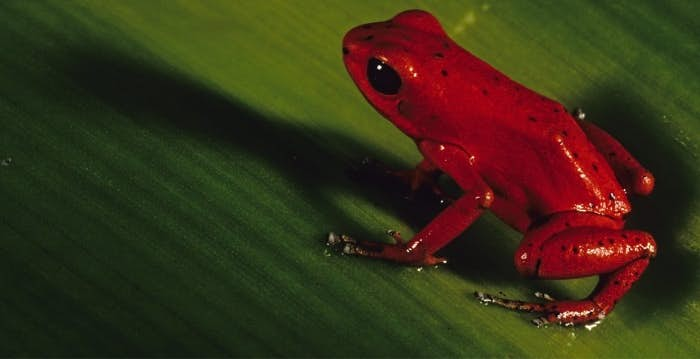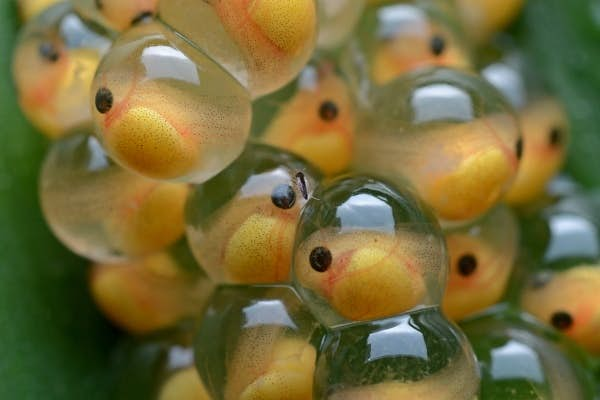Nature puts on some impressive shows, and observing the ways animals live in their habitats broadens our understanding of their instinctive behaviours.
Nature puts on some impressive shows, and observing the ways animals live in their habitats broadens our understanding of their instinctive behaviours.
If we take the time to explore different ecosystems, we may encounter certain behaviours that were previously thought to be exclusively human. One interesting species that’s worth learning about is the red frog.
This frog is characterised by its red colour, as indicated by its name, and this amphibian’s skin is extremely poisonous. It doesn’t make any effort to camouflage itself, as its vibrant colour acts as a warning sign for other animals.
Male red frogs can grow to be up to 12 mm long, while females can grow up to 15 or even 20 mm long.

**The production of venom
The red frog is the second most poisonous species of the Ranitomeya genus (anuran amphibians from the venomous frog family).
Its toxicity is caused by a diet that is based on ants, which contain formic acid, and mites, which contain toxins in their bodies. As red frogs depend on external sources to produce their venom, those that are in captivity lose this property.
**Reproduction
Red frogs live in groups of five or six. Once the rainy season is over, these groups begin to reproduce. The ritual begins when the males carefully approach the females, lick them, then position their back legs on top of them; this is how frogs mate.
The reason why the breeding period starts at the end of the rainy season is to guarantee that the eggs will be laid by the beginning of the following rainy season. This ensures that the tadpoles will have enough water to keep them alive.

**Protecting tadpoles
We’re used to seeing large quantities of tadpoles in bodies of water. This is a common thing to see as frogs and toads are species that generally don’t have parental instincts, and so they leave their tadpoles in the inhospitable tropical rainforest to fend for themselves.
Learn more about the best spots to see red frogs by clicking here. Red frogs, on the other hand, make very responsible parents, which is probably the most remarkable characteristic of this species. The females lay their eggs on a leaf that has been chosen by the male beforehand in order to protect them from small predators.
Sunshine is the main threat to the offspring. Even a few minutes of sun exposure can be fatal.
The larvae develop inside the eggs, while being constantly watched over by the male. When they hatch, they’re carefully carried on the female’s back to a safe place where they can grow without being threatened by predators.
Red frog tadpoles are generally found far from the ground, and the epiphytic bromeliad plant is one of the red frog parents’ preferred spots to keep them. The shape of this plant’s leaves allows small puddles to form in them, where the larvae can grow with minimal risk.
There is a lack of nourishment in these leaves, so the red frog frequently climbs up to bring its offspring what they need to continue developing.
Climbing a tree is seemingly easy, but for a land dwelling frog it’s a complicated task that requires time and energy.
After four or five weeks, the tadpoles will have grown into young frogs, ready to take their first leaps into the jungle.
Although the red frog’s methods don’t entirely guarantee the survival of their young, they certainly represent one of the most impressive examples of parental care among amphibians.
There are several locations in Costa Rica where you can see this unique amphibian process, one of which is Mistico Park. This ecological park offers tours on which you can discover hundreds of detailed processes occurring daily in nature.
The tour is a fun, educational, and unforgettable experience. Having our guides accompany you allows you to learn interesting facts about the ecosystems in tropical rainforests.
Come visit Mistico Park and have an unforgettable adventure.









